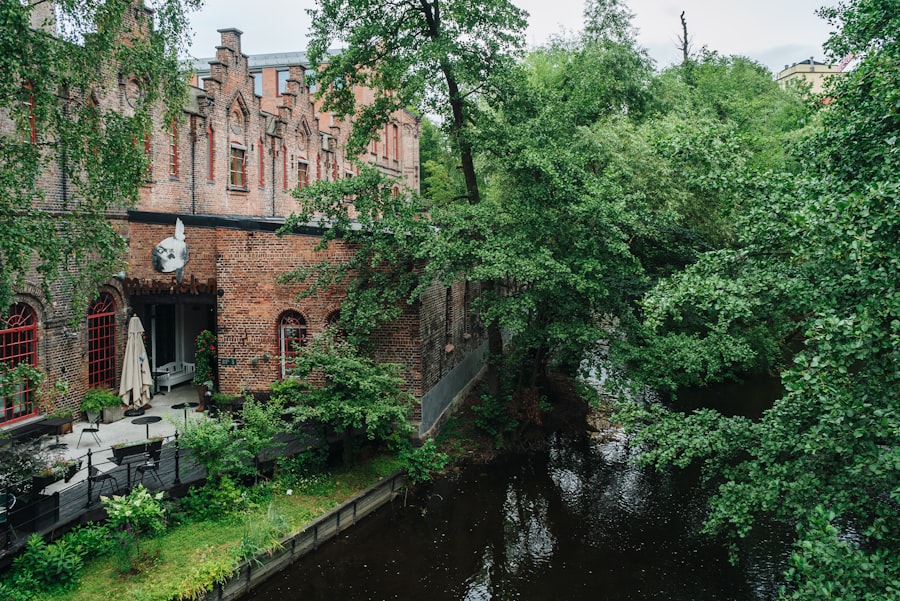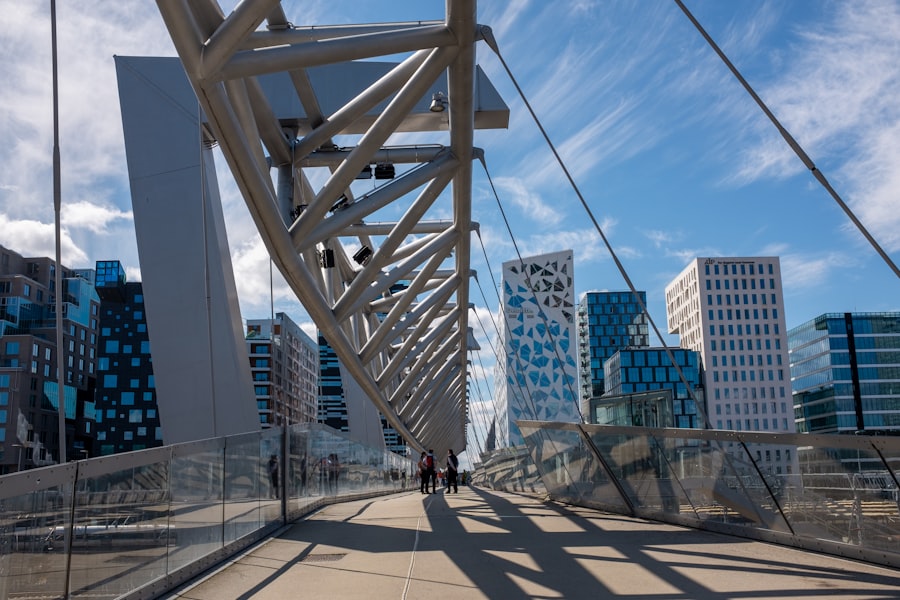Driving in Norway offers a unique experience that combines breathtaking landscapes with the challenges of navigating through a country known for its rugged terrain and diverse weather conditions. The allure of the open road, flanked by majestic fjords and towering mountains, is a significant draw for both locals and tourists alike. However, before embarking on a journey through this stunning Scandinavian nation, it is essential to understand the intricacies of driving in Norway, including the rules, regulations, and the driving culture that shapes the experience.
Norway’s extensive road network connects cities, towns, and remote villages, making it an ideal destination for road trips. From the vibrant capital of Oslo to the picturesque coastal towns of Bergen and Ålesund, the journey is often as rewarding as the destination itself. However, driving in Norway is not without its challenges.
The combination of narrow roads, steep inclines, and unpredictable weather can test even the most seasoned drivers. Therefore, familiarising oneself with the local driving customs and regulations is crucial for a safe and enjoyable experience. Take the first step. Book a consultation with the Norway Relocation Group for your move to Norway. https://norwayrelocation.no/one-hour-strategy-session/
Summary
- Driving in Norway requires understanding the rules and regulations, obtaining a driving license, and navigating the roads effectively.
- Speed limits and enforcement are strictly regulated in Norway, so it’s important to adhere to the rules to avoid fines and penalties.
- Parking and tolls are common in Norway, so it’s essential to be prepared for these expenses when driving in the country.
- Different seasons in Norway can present unique challenges for drivers, so it’s important to be aware of the conditions and adjust driving habits accordingly.
- When driving in Norway, it’s important to be prepared for emergencies and accidents by knowing the local emergency numbers and having the necessary insurance coverage.
Understanding the Rules and Regulations
Norway has a well-defined set of rules and regulations governing road use, which are designed to ensure the safety of all road users. One of the most important aspects of driving in Norway is adherence to traffic laws, which are strictly enforced. Speed limits are clearly marked, and penalties for violations can be severe.
It is essential for drivers to be aware of these limits and to adjust their speed according to road conditions, especially in rural areas where wildlife may unexpectedly cross the road. In addition to speed limits, Norway has specific regulations regarding seatbelt use, mobile phone usage while driving, and alcohol consumption. All passengers in a vehicle must wear seatbelts, and using a mobile phone without a hands-free device is prohibited.
Furthermore, Norway has a zero-tolerance policy for drinking and driving, with strict blood alcohol limits enforced. Understanding these regulations is vital for anyone planning to drive in Norway, as ignorance of the law is not accepted as an excuse.
Obtaining a Driving License in Norway

For those wishing to drive in Norway, obtaining a valid driving license is a prerequisite. If you are a resident of Norway or planning to stay for an extended period, you will need to apply for a Norwegian driving license. The process involves several steps, including passing both a theoretical and practical driving test.
The theoretical test covers various topics such as traffic laws, road signs, and safe driving practices. For visitors from other countries, it is important to check whether your existing driving license is valid in Norway. Many countries have reciprocal agreements with Norway that allow tourists to drive with their national licenses for a limited period.
However, it is advisable to carry an International Driving Permit (IDP) alongside your national license to avoid any potential issues with local authorities. Understanding the requirements for obtaining or using a driving license in Norway will help ensure a smooth driving experience.
Tips for Navigating Norwegian Roads
Navigating Norwegian roads can be both exhilarating and daunting due to their unique characteristics. One of the most important tips for drivers is to remain vigilant and adaptable. The roads can vary significantly from well-maintained highways to narrow mountain passes that require careful manoeuvring.
It is advisable to plan your route in advance and be prepared for sudden changes in weather conditions that may affect visibility and road safety. Another crucial aspect of navigating Norwegian roads is understanding the concept of “right-hand traffic.” In Norway, vehicles drive on the right side of the road, which may differ from countries where left-hand traffic is the norm. Additionally, be mindful of cyclists and pedestrians, especially in urban areas where they may have priority at intersections.
Familiarising yourself with local driving etiquette will enhance your experience and contribute to safer roads for everyone.
Road Signs and Signals
Road signs in Norway are designed to be clear and informative, providing essential information about speed limits, directions, and potential hazards. Most signs are standardised across Europe, making them relatively easy to understand for international drivers. However, it is still important to familiarise yourself with specific Norwegian signs that may differ from those in your home country.
In addition to standard road signs, Norway employs various signals at traffic lights and intersections that dictate right-of-way rules. For instance, green arrows may indicate that turning is permitted even when the main light is red. Understanding these signals will help you navigate intersections safely and efficiently.
Moreover, pay attention to warning signs indicating wildlife crossings or adverse weather conditions, as these can significantly impact your driving experience.
Speed Limits and Enforcement

Speed limits in Norway are strictly enforced, with penalties for violations being quite severe compared to many other countries. Generally, urban areas have a speed limit of 50 km/h (31 mph), while rural roads typically allow speeds of up to 80 km/h (50 mph). On motorways, the limit can reach 110 km/h (68 mph).
However, these limits can vary based on specific road conditions or local regulations, so it is essential to remain vigilant and adhere to posted signs. Norwegian authorities employ various methods to enforce speed limits, including speed cameras and police patrols. Fines for speeding can be hefty, and repeat offenders may face even harsher penalties.
Additionally, speeding fines are often calculated based on income levels in Norway, meaning that wealthy individuals may face significantly higher fines than those with lower incomes. This system underscores the importance of respecting speed limits not only for safety but also to avoid financial repercussions.
Parking and Tolls
Parking regulations in Norway can vary significantly from one city to another. In urban areas like Oslo, parking spaces are often limited and may require payment through parking meters or mobile apps. It is crucial to observe parking signs carefully to avoid fines or towing.
Many cities also offer designated parking zones for residents or permit holders; therefore, it is advisable to check local regulations before leaving your vehicle unattended. Tolls are another consideration when driving in Norway. Many major roads and bridges are subject to toll fees that can add up quickly during longer journeys.
Some regions have implemented automatic toll systems that charge vehicles as they pass through designated areas without requiring drivers to stop. It is wise to plan your route accordingly and budget for these costs when considering a road trip across the country.
Driving in Different Seasons
Driving conditions in Norway can vary dramatically depending on the season. In winter months, snow and ice can create hazardous driving conditions that require special precautions. It is mandatory for vehicles driven during winter months (from November to April) to be equipped with winter tyres or snow chains.
Additionally, drivers should be prepared for reduced visibility due to snowstorms or heavy rain. Conversely, summer driving offers its own set of challenges and rewards. While the weather is generally milder and more conducive to travel during this time, tourists flock to popular destinations, leading to increased traffic congestion on major routes.
It is advisable to plan your trips during off-peak hours when possible and remain patient while navigating through busy tourist areas.
Road Trips and Scenic Routes
One of the most rewarding aspects of driving in Norway is the opportunity for unforgettable road trips along some of the world’s most scenic routes. The country boasts numerous designated scenic drives that showcase its natural beauty, such as the Atlantic Road and the Lofoten Islands route. These journeys offer breathtaking views of fjords, mountains, and coastal landscapes that are sure to leave lasting memories.
When planning a road trip in Norway, consider taking your time to explore small towns and hidden gems along the way. Many scenic routes feature designated viewpoints where you can stop and take in the stunning surroundings. Additionally, be sure to check local tourism websites for information on attractions or activities available along your chosen route; this will enhance your overall experience and allow you to fully appreciate what Norway has to offer.
Dealing with Emergencies and Accidents
Despite careful planning and adherence to regulations, emergencies can occur while driving in Norway. It is essential for drivers to be prepared for unexpected situations such as breakdowns or accidents. In case of an emergency, it is advisable to pull over safely to the side of the road if possible and call emergency services if necessary.
Norwegian emergency services can be reached by dialling 112 for police assistance or 113 for medical emergencies. Additionally, having a basic understanding of first aid can be invaluable in case of an accident involving injuries. Always carry essential items such as a first aid kit, reflective vests, and warning triangles in your vehicle; these items can prove crucial during emergencies.
Enjoying the Norwegian Driving Experience
Driving in Norway presents an unparalleled opportunity to explore one of Europe’s most stunning countries at your own pace. By understanding the rules and regulations governing road use, familiarising yourself with local customs, and preparing for varying weather conditions, you can ensure a safe and enjoyable journey through this remarkable landscape. As you navigate through picturesque towns and breathtaking scenery, take time to appreciate the beauty that surrounds you—whether it’s the dramatic fjords or charming villages nestled among mountains.
With careful planning and respect for local laws, your driving experience in Norway will undoubtedly be one filled with adventure and unforgettable memories. For those looking to immerse themselves further into Norwegian culture while preparing for their travels or living experiences in this beautiful country, consider enrolling in Norwegian courses at the NLS Norwegian Language School in Oslo. These courses offer an excellent opportunity not only to learn the language but also to gain insights into local customs and etiquette that will enhance your overall experience while driving through this magnificent land.
Embrace the journey ahead—both on the road and in learning about this captivating culture!
Learn more about the Norwegian classes at the NLS Norwegian Language School in Oslo

